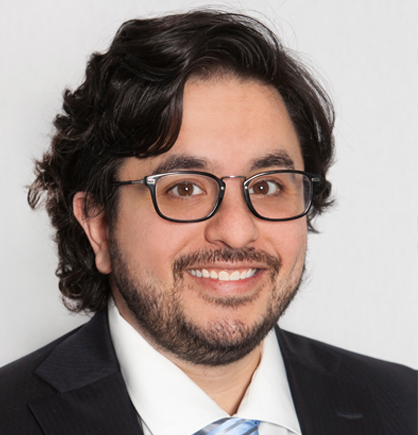
It is 2 a.m. at Fictitious Post-Acute Care in Rural County, USA, and all is quiet but for the 82-year-old patient in Room 15. She’s distressed and disoriented, and her nurse suspects a UTI — a condition that could likely be assessed and treated in-house.
Following protocol, the nurse pages the on-call physician and waits. Over an hour later, concerned for her patient, she tries again. This time, she receives a callback, but the voice on the other end is not Dr. Thomas. It’s Dr. Smith, and he sounds irritated. “That’s not my patient. I’m just taking the call. I know nothing about her,” the physician says.
The nurse attempts to acquaint him with the patient. She believes they could prevent the unnecessary stress of a trip to the emergency department. But Dr. Smith cuts her off. “Send her to the ER and don’t page me again. I have office hours in the morning, and I need to sleep.”
Chastened and under pressure to provide care for other patients, the nurse resolves to follow the doctor’s order — and avoid communication with him in the future.
The scenario above is fictitious, but not uncommon. Nurses assigned to the third shift in rural post-acute care facilities have some of the toughest jobs in the U.S. Their work is often hampered by inadequate communication between healthcare providers and inefficient handoffs.
Based on decades of experience as a hospitalist, I can attest to a widespread tendency for post-acute care clinicians to divert responsibility to the emergency department at the local hospital, rather than manage patient care themselves, with front-line, in-house resources.
I am not anti-hospital; nursing home patients often end up in the ED due to complex management of their case and rightly so. But I believe strongly that a high standard of care includes the use of front-line competencies first, when possible.
Nursing homes, nurses or physicians: Who’s accountable?
Nurses working the third shift have become accustomed to tolerating a system that causes unsatisfying working conditions for them and suffering for their patients. They develop workarounds to compensate for doctors who have not been held accountable for inadequate care in the past. While they may want to do better for their patients, they are hard-pressed to assert themselves and try to change the system.
The standard of care has suffered, meaning patients have suffered — and unnecessarily. If nurses and physicians on the third shift have the competency and resources to evaluate and treat in place, how did we come to be in this position?
Post-acute care providers in the rural setting
The rural nursing home doctor is often an outpatient, office-based physician with special training in geriatrics. He or she is a solo practitioner, sometimes part of a group, and post-acute care augments their practice, rather than being its primary focus. That local community doctor may be the medical director of multiple regional nursing homes, trying to manage all of them simultaneously.
Overwhelmingly, nurses working in these facilities are there to advocate for their patients. They want to make a difference. They want to work at the top of their license. Every time their voice is not heard, and they are forced to relinquish responsibility for their patient when they believe they could have done more, there is a sense of defeat.
Accountability isn’t always out of their hands. Sending patients to the ED can become an uneasy workaround for an understaffed nursing home. In a worst-case scenario, an overworked nurse may look to send a patient to the hospital as a way to unburden herself or her colleagues.
Accountability, incentives and expectations
If a medical director comes into the nursing home only once a month, and the facility has a high unplanned hospitalization rate, what does that say about the care they are providing to residents?
Facility administrators care about this, but often lack the ability to hold a physician accountable to a higher standard of care. In many rural areas, the nursing home medical director might be the only doctor within a 30-mile radius. They’re not employed by the nursing home and are not required to answer to anyone at an administrative level.
But there is a way to motivate them, and other providers, to improve care.
Incentives
The answer to this conundrum is a system based on financial incentives. Incentive-based payments motivate provider groups whether doctor, nurse practitioner or physician’s assistant. When a nursing home’s star rating goes up, or unplanned hospitalization ratings go down, a system of trickle-down based economics could be a boon to the entire nursing staff. A better level of care will bring a higher star rating to the nursing home, which will attract more patients to their facility. Lower return-to-hospital rates will mean reduced penalties, so by having trickle-down economics administrators have inspired their staff to do right by the patient.
One way to create this is to set up bundled payments. Many post-acute care facilities already take part in the Bundled Payments for Care Improvement–Advanced program, in which facilities are rewarded for episodes of quality care rather than volume of care delivered. Providers are then motivated by evaluation results and hospital or nursing home statistics that demonstrate quality care.
Expectations
For incentives to work, a facility must set expectations. For physicians, this means:
- Attendance and participation. You can’t drive great care for patients if you’re not in the building.
- Evidence-based medicine. Use of protocols that are accepted nationwide.
- Membership in the post-acute sector. Physicians must be active members of the American Medical Directors Association.
- Active and up to date board certification. Patients and families must know their physician’s competency has been validated within the medical profession.
- Unplanned hospitalization rates. Regular evaluation of why patients were sent to the ER and a payment structure that holds physicians accountable to hospitalizations that were avoidable.
- Patient satisfaction rates.
All providers should demonstrate effective and timely communication with families, a patient’s medical team and ED physicians if a patient must be sent to the ED.
Support for rural post-acute care facilities
To implement this solution, begin by building a strong provider base, a bench of competent and professional physicians who subscribe to the expectations outlined above.
Next, leverage telemedicine to bridge the gaps. The goal is to increase access to more and better post-acute care doctors, so the rural doctor isn’t overburdened. Telemedicine creates more bandwidth to support continuity of care. If the hypothetical patient at the beginning of this article needed specialist care at 2:00 a.m., her nurse could have had easy access to those providers through telemedicine.
Finally, to encourage patient responsibility among providers, administrators should actively promote speak-up culture, particularly for those working the third shift. Nurses often fear the consequences of sharing their point of view with physicians and are exhausted by a sense of futility. Instead, nurses need to be empowered, respected and treated as professionals by colleagues so they can best advocate for their patients.
Over time, neglect and lack of accountability has resulted in a system that is often ineffective and causes real harm to elderly and other post-acute care patients who cannot advocate for themselves. It doesn’t have to be that way. By holding doctors accountable to be effective communicators, working conditions and patient care on the third shift can be greatly improved.
Waseem Ghannam, M.D. is president of Telehealth Solution.





